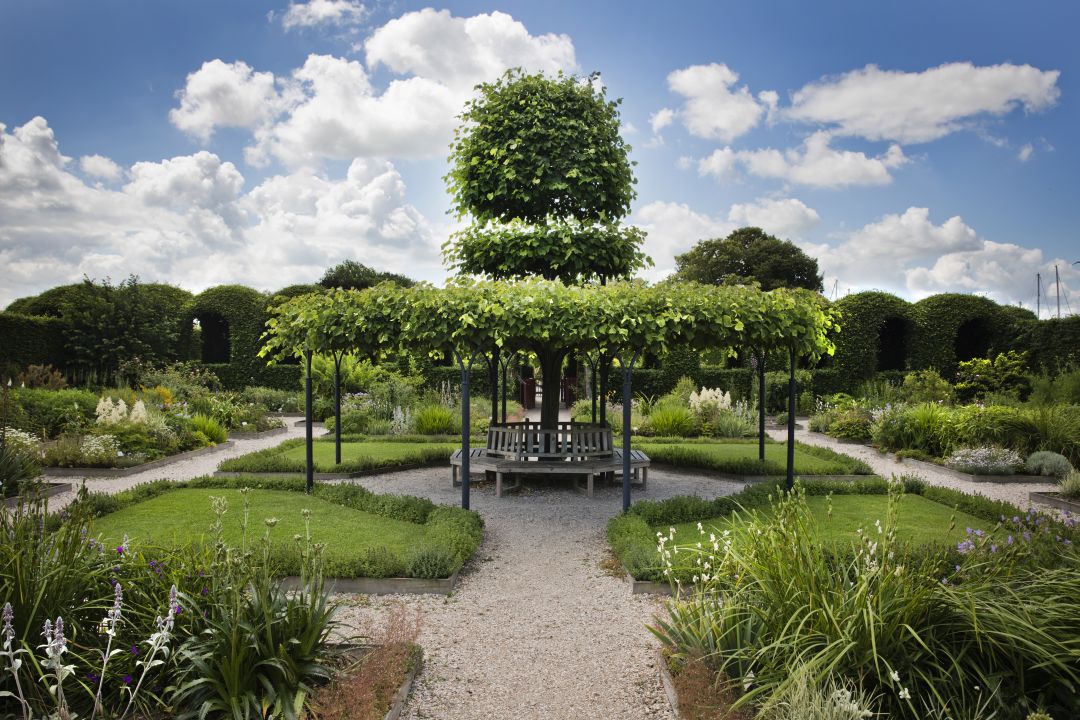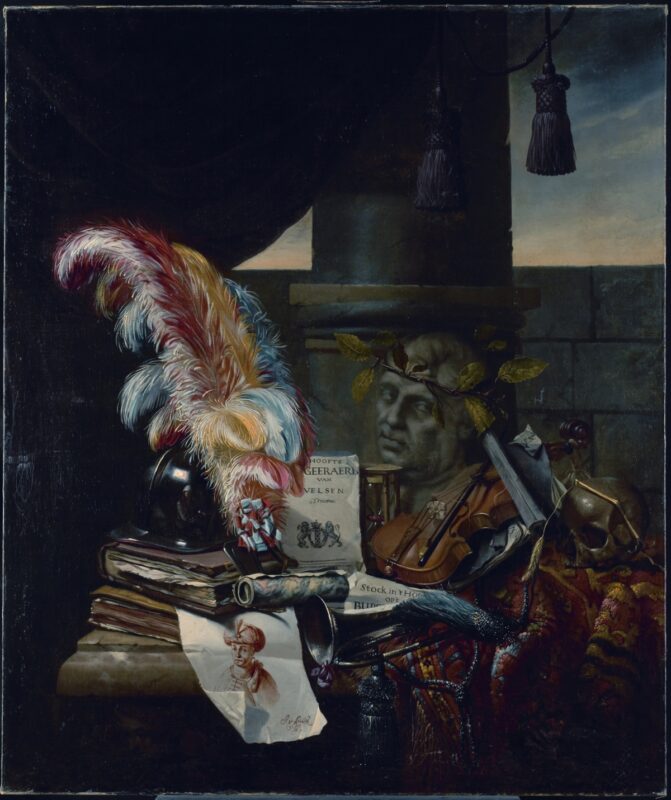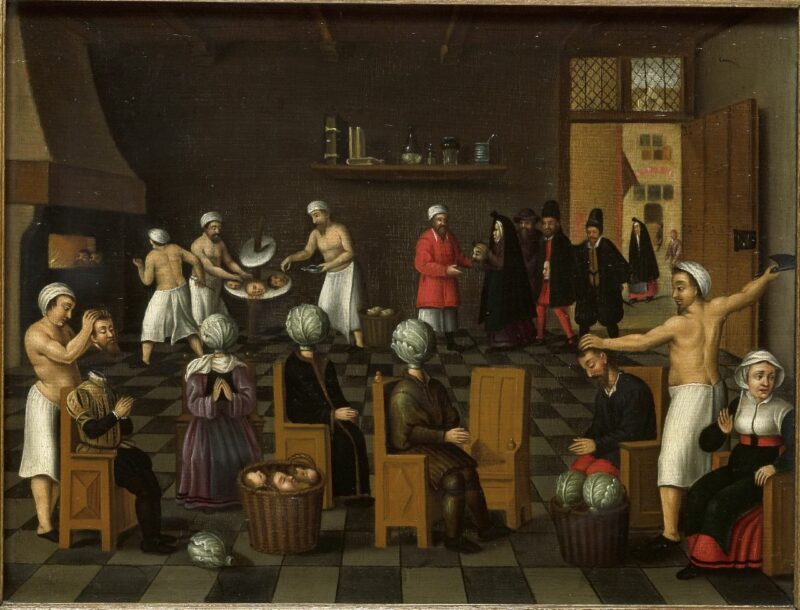Green treasury
It was impossible to live in a castle without gardens. The Muiderslot gardens are even more special because they are bursting at the seams with heirloom fruits and vegetables. Forgotten and endangered historic flowers and plant species are offered refuge here. It is a unique collection that changes every season. A collection you can smell, feel, and taste. The gardens are a reconstruction of the Renaissance gardens commissioned by Pieter Corneliszoon Hooft, the most famous resident of Muiderslot castle, in the first half of the 17th century. The high beech hedges around the garden served to break the salty sea wind blowing in from the South Sea. The garden is split into two sections by a covered leafy alley, the berceau. On one side is the Kruydhof or herb garden with kitchen herbs, as well as herbs to make medicine or dyestuffs. On the other side of the berceau is the Warmoeshof or vegetable garden. These were important so the castle could be self-sufficient and was the place where exciting new vegetables brought by merchant ships from India and the Americas, such as artichokes, tomatoes and maize, were planted. Like the 17th-century gardeners, our gardeners work without artificial fertilizers, pesticides or heated greenhouses. It is a truly organic garden.
 EN
EN NL
NL DE
DE![Muiderslot [EN]](https://muiderslot.nl/en/wp-content/uploads/sites/2/2021/07/muiderslot-rood.png)
![Muiderslot [EN]](https://muiderslot.nl/en/wp-content/uploads/sites/2/2021/07/Logo_Vierkant_Muiderslot_Rood.png)




